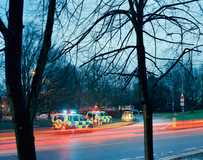Airport security / United Kingdom
The flight watch
When it comes to protecting the world's travel hubs, police are increasingly relying on some unlikely weapons; Matthew the plane-spotter and Graham the farmer. Monocle reports from Gatwick on the very local response to te global terror threat.
The police who patrol Gatwick airport won’t say the word “quiet”. “The Q-word”, they call it, invoking it only in wincing whispers evocative of superstitious thesps afraid of mentioning Macbeth. Where fearful Shakespeareans will refer to “the Scottish play”, Gatwick’s police will describe an uneventful day as “Q”. “It’s just that if someone does say the Q-word,” explains Police Constable Paul Loader, “what always happens next is that things become rapidly very un-Q.”
This pleasingly sunny and “Q” Monday morning, PC Loader is driving us around Gatwick’s perimeter, trying to help us find examples of an unlikely and unheralded legion of deputies in the War on Terror: plane-spotters. As part of their efforts to involve the local community in the protection of Gatwick, the police have taken to liaising regularly with the anoraked figures who gather at the ends of runways with Thermoses, notepads, and cameras.
“If anyone new does show up and starts acting suspiciously,” explains Loader, “they’re more likely to notice than we are.” Plans are underway to issue official police accreditation to approved spotters (such a scheme already exists at Luton airport, north of London). “You might be out of luck,” muses Loader, as the police van ambles along Gatwick’s wire-fence perimeter. “It’s a bit cold today, and it is a Monday. No, hang on, there’s one.” We dismount alongside a somewhat bemused figure, dressed in black, encumbered by a rucksack and hefty camera. His name is Matthew Taylor, and he has come up from Portsmouth for the day. He speaks highly of the manner in which the Gatwick Airport police have seen the intelligence-gathering potential of his brethren (the move was instigated by one of the police community support officers based at Gatwick, who is a plane-spotter himself). “I don’t come here that often,” he avers, “but generally, spotters are a very tight-knit community. It makes obvious sense to engage with them. And they’d be happy to help, obviously.” “We’ve had to find new ways to think about these things,” says Loader, as we drive back to the station. “You have to read a lot, be vigilant, and try to stay one step ahead.”
Little illustrates the fundamental illogic of terrorists like their obsession with air travel. Any free society offers innumerable barely defended targets, which could be attacked in the certainty of sowing death, panic and misery, yet the modern terrorist – the Islamist strain in particular – persists in playing the hapless, over-complicating Wile E Coyote to the maddeningly elusive Road Runner of airports and aircraft.
In 2006, intelligence services in Britain disrupted a plot to blow up as many as 10 outward-bound aircraft simultaneously with an explosive combination of apparently innocent liquids. In 2007, Glasgow airport was attacked in a suicide car-bombing, which mercifully injured nobody but the quixotic kamikazes in the propane-packed vehicle.
In this context, Gatwick airport is a hugely appetising target. Opened in 1958, it is situated in West Sussex, 45 km south of London. Gatwick is the UK’s second biggest airport after its London rival Heathrow, and the seventh-busiest international airport in the world. In 2007, Gatwick’s single runway welcomed or dispatched 35.16 million passengers, flying on 90 airlines to more than 200 destinations. Superintendent Robin Smith, Gat-wick’s divisional commander, works at a desk overlooked by a photograph of a pre-September-11 Manhattan, the Twin Towers distantly visible.
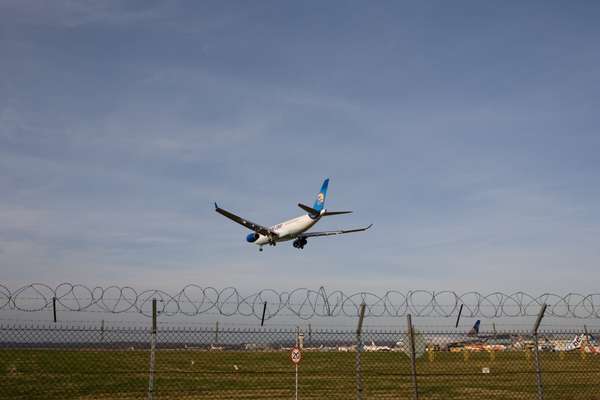
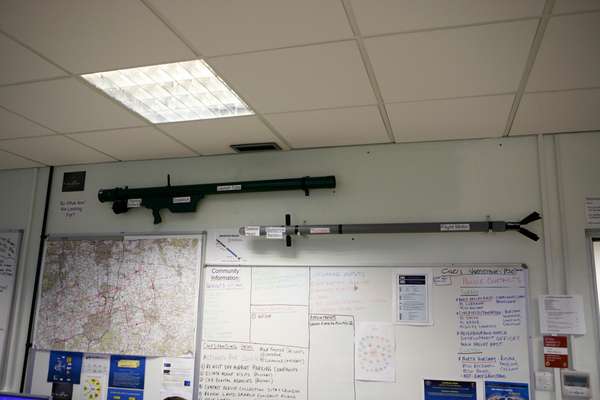

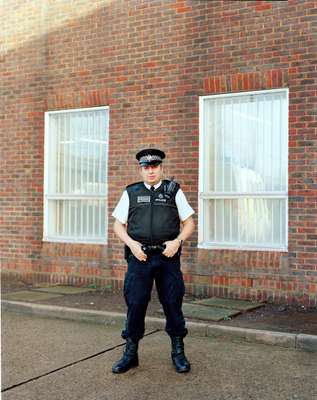
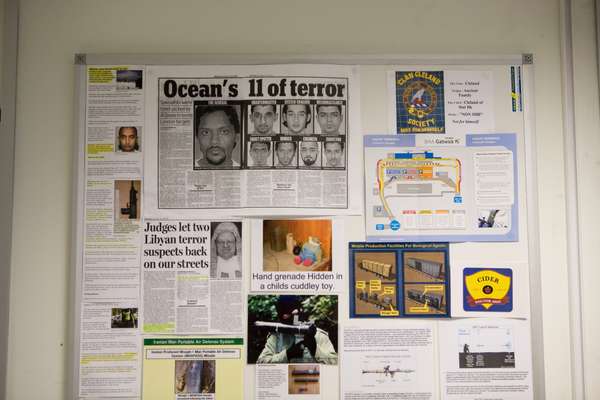
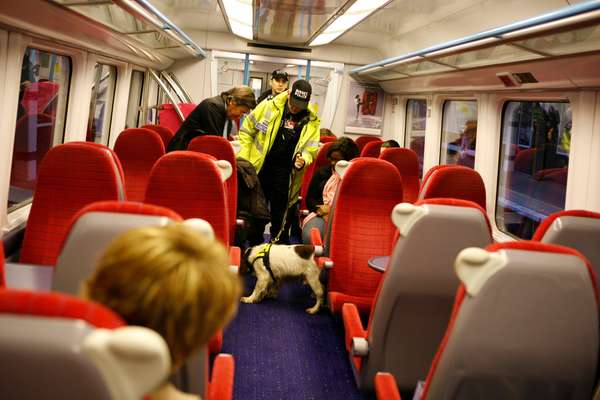
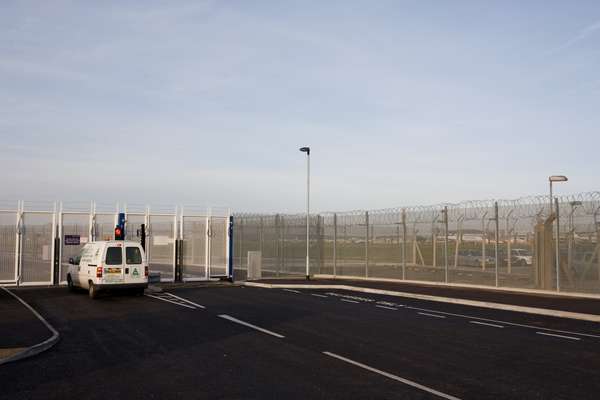
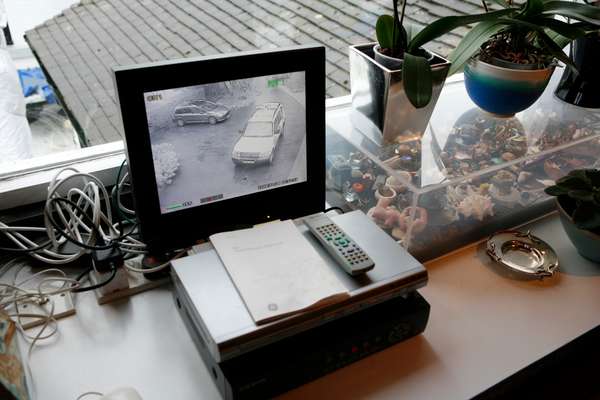
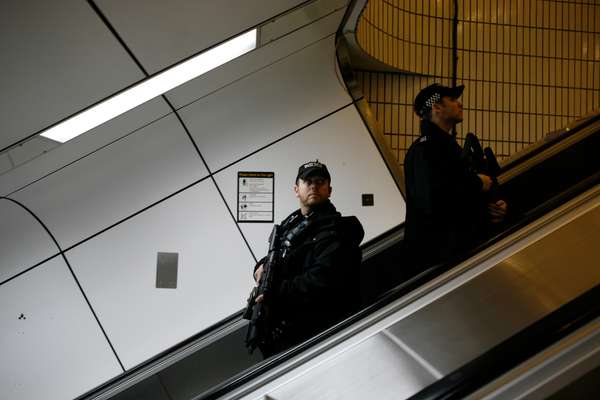
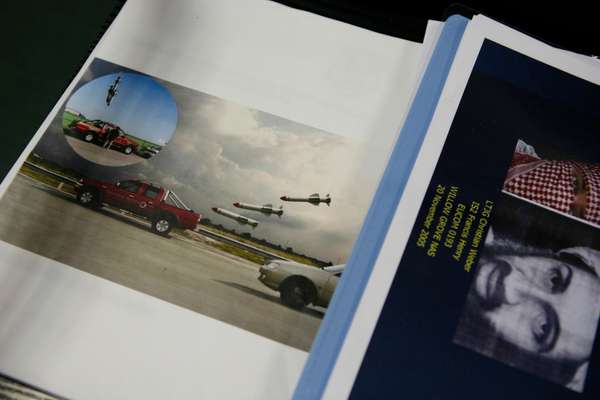
“At the risk of sounding pompous,” he says, “I hung it there to remind me why we’re here.” Though the wages of the 170 police and PCSOs (police community support officers) at Gatwick are paid by the British Airports Authority – the now Spanish-owned corporation that operates most of Britain’s major airports – the officers commanded by Superintendent Smith are Sussex Police, working an unusual beat. Looming above and beyond the prosaic law-breaking any cop deals with – theft, drunkenness, violence, none unheard of in the often stressed and emotional environment of an airport – is the threat of monumental calamity. “Without any doubt,” says Smith, “there are people looking at Gatwick. And my job is to catch them.”
The first we see of the efforts to dissuade them is a vehicle checkpoint – or, in the acronym-ridden jargon as beloved by the police as the military, a VCP. In the misty, pre-dawn dark, traffic cones are laid along a stretch of road inside the airport grounds, and a nine-year-old cocker spaniel called Oscar is deployed to check surrounding bushes for explosives. When Oscar’s work is done, armed officers, clutching Heckler & Koch G36 assault rifles across their chests, deploy on the roadside, while unarmed police wave in random vehicles.
“Sometimes,” says one of the armed officers, who aren’t keen on having their names in print, “we pick up drivers on outstanding warrants, but it’s mostly to reassure people. I think this is a place people want to see police.” A constant presence, armed and unarmed, is maintained inside the terminal. Oscar is let loose on a few bags, to the delight of queueing passengers. The only audible exasperation comes from Oscar’s handler, when, after completing one check-in line, he abruptly deserts his post. “He knows they keep dog biscuits at the Northwest [Airlines] check-in,” says the officer, before setting off in pursuit. The patrol then takes Oscar on board a train preparing to leave the airport, armed officers remaining on the platform to intercept anyone who disembarks with untoward alacrity.
Back at the police station, there’s a room that ought to be numbered 101, in recognition of the fact that it enshrines one of the most visceral fears of anyone concerned with the safety of airports – which is to say, almost everyone. It’s the room staffed by the Aviation Security Unit – more recently known as the MANPAD Unit. MANPADs are Man-Portable Air Defence Systems – usually shoulder-launched surface-to-air missiles, capable of bringing down aircraft, up to and including airliners.
In March 2007, a Belarusian Ilyushin-76 cargo aircraft crashed after take-off from Mogadishu, after being struck by a Russian-built SA-18 MANPAD. In November 2003, a DHL Airbus-300 was winged by an SA-14 MANPAD after taking off from Baghdad, but landed safely. In November 2002, two MANPAD missiles were fired at an Israeli charter jet full of holidaymakers taking off from Mombasa, Kenya. MANPADs are simple to operate, easy to conceal and inexpensive to purchase, and the successful deployment of one near a major First World airport fuels the dreams of terrorists and the nightmares of their opposition.
Gatwick’s Aviation Security Unit operates out of a room upholstered with illustrations of its quarry. Pictures and placards list the organisations believed to own MANPADs. Other decorations include a replica of an SA-7, built by the unit’s sergeant from scrap metal in his garage, portraits of the Queen and their self-designed, unofficial coat of arms – an eagle snatching a MANPAD in its talons.
While clearly very serious about his job, the sergeant – a former Royal Marine who also prefers not to be named – is unabashed about enjoying it. “It’s real policing,” he says. “Talking to people, gathering intelligence, following up leads – not filling in forms and meeting targets.”
The sergeant acknowledges that there is next to no chance of random police patrols running across miscreants preparing to shoot down aircraft – there are 300 farms and several villages in MANPAD range of Gatwick. So what the unit is doing with plane-spotters it is also doing with local people – especially estate agents, mail deliverers and Neighbourhood Watch schemes. Canadian-born PCSO Naila Syed drives us out to Horley, where a regular contact (and fellow Torontonian), Willo Heesom, possesses a view of chocolate box-lid greenness and pleasantness, and an email network of watchful neighbours.
It doesn’t look like a frontline from Heesom’s living room – on a crisp, clear winter’s day like this, the most vicious conflict it is possible to imagine it hosting would be one over failure to replace a divot. But a frontline it is, and it’s difficult not to recall what Superintendent Smith had said earlier in the day: “The current threat level is Severe, which is one below Critical. It has been that way for a while now, and I can’t imagine it will change. This is the new normality. All we can do is be as prepared as possible for when the bad thing happens, and in the meantime do all we can to prevent it.”
The MANPAD threat
“The most common system,” says Jeremy Binnie, terrorism and insurgency analysis editor at Jane’s Terrorism & Insurgency Centre, “is the Russian Strela-2. There are also Chinese, Egyptian and Iranian versions. Later models include the SA-16 and SA-18 – the UN said it was the SA-18 that was used to shoot down the Ilyushin.
“There are various systems,” continues Binnie. “The SAs work on infrared, locking to a heat source and tracking it. Then there are newer ones that target a laser beam at the aircraft and follow it, and Command Line Of Sight, or CLOS, where the missile is guided with a little joystick. The ones that terrorists could get hold of – realistically, the SAs, the heatseekers – are all what you might call tailchasers. They have to be fired from behind the aircraft at takeoff or landing, so it’s not too hard to work out where they can be successfully launched from. It’s also very difficult to get your hands on one – most recorded instances of attempted purchases have generally been sting operations. But it is not impossible that a more sophisticated group could try to bring one in from outside.”
There are deterrents beyond the work of patrol and intelligence-gathering, however. “All military aircraft flying in insurgent zones have electronic countermeasures of some description,” says Binnie. “They can detect when a missile is locking on and fire flares, which will distract heat-seeking warheads. The idea of fitting these to civilian planes comes up every time someone fires at an airliner, but it would be a lot of extra weight and expense.” Binnie confirms he’s heard the rumours that El Al has fitted such devices, but this is impossible to confirm. Various western carriers have recently been trialling such systems. “It probably is more about ground security. That brings into question security at a lot of airports in the developing world. That’s where airlines should be focusing.”

